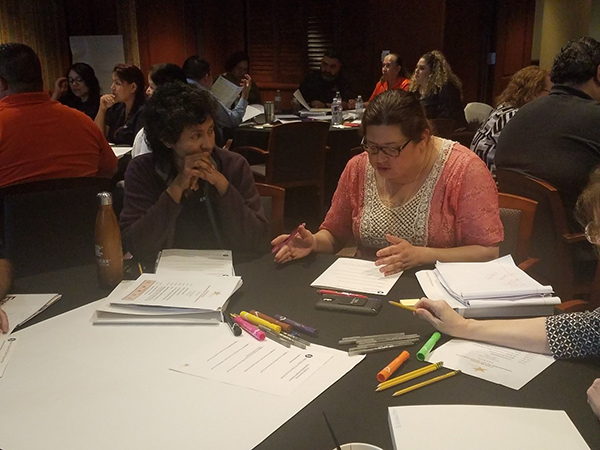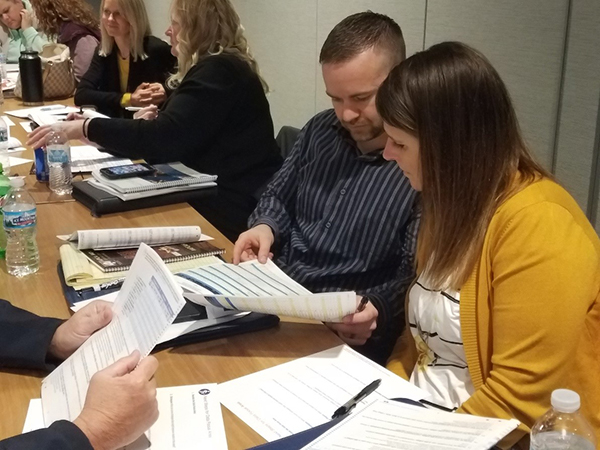- Executive Director’s Note
- Center to Release National Report on Guided Pathways in March 2020
- Stories From the Field: Sharing Data With Academic Leadership
- Community College Voices: On Teaching and Learning
- Delving Into Data: What Questions to Ask of Your College’s Data
- Survey Item Spotlight: Career Goals and Opportunities
- Featured Tool: Connecting Center Data to Academic Mindset
- On the Road
Executive Director’s Note
September 2019
 |
 |
| Evelyn Waiwaiole | Linda García |
In 2001, the Community College Survey of Student Engagement (CCSSE) was birthed, and I had the privilege to be part of the very first staff team to work with the 12 community colleges that volunteered to participate in the pilot administration. A lot has changed since then. Now, in 2019, the Center for Community College Student Engagement (the Center) has surveyed students from 969 colleges across all 50 states, the District of Columbia, and beyond. The participating colleges have a total enrollment of 6,443,948 credit students, represented by over three million student respondents to our surveys. And I’m no longer that staff member working with the surveys for 12 colleges, but am the Center’s Executive Director.
Like all things, this too is changing. I am not leaving the Center, but I am transitioning into a leadership position that will allow me more time with my four daughters. It has been a privilege and a great honor to lead the Center, and I very much look forward to my continued work here—and my continued work with so many of you across the country.
On October 15, I’ll be stepping into the role of Senior Advisor to the Executive Director. As I transition into this new role, I want to thank you—the community colleges, the national and state organizations, and the philanthropic organizations—not only for your support of the Center, but more importantly for your continued focus on the success of students.
I am pleased to announce that Dr. Linda García has been named as the next Executive Director for the Center. Many of you know her, as she has served in a leadership role here for the last three and a half years. This is a great next step for our organization, and I very much look forward to my continued work with Linda.

Center to Release National Report on Guided Pathways in March 2020
As many institutions across the country are redesigning for guided pathways, the Center has been busy collecting student and faculty data on the topic. Funded by a Bill & Melinda Gates Foundation grant to the American Association of Community Colleges (AACC), the Center joined several other national organizations in the Pathways Project beginning in 2015.
One component of the project was the administration of a 12-item module with the 2018 Survey of Entering Student Engagement (SENSE) and a 20-item additional item set with the 2019 Community College Survey of Student Engagement (CCSSE). The Center also added several items to the 2019 Community College Faculty Survey of Student Engagement (CCFSSE). Preliminary results are compelling. Here is a sampling:
SENSE 2018

CCFSSE 2019 (Among Part-Time Faculty)
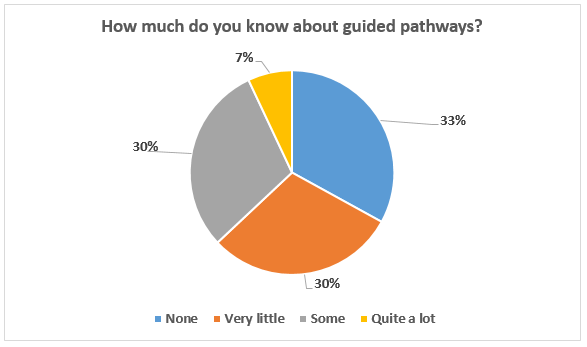
Be on the lookout for the report next March!
The report release will also include several tools that colleges can use to explore this topic further with their own students, faculty, and staff—but in the interim, see our SENSE and CCSSE Pathways Toolkits. These are tools that connect SENSE and CCSSE data to three major components of the guided pathways work: helping students get on a path, helping students stay on their path, and ensuring that students are learning
Stories From the Field: Sharing Data With Academic Leadership
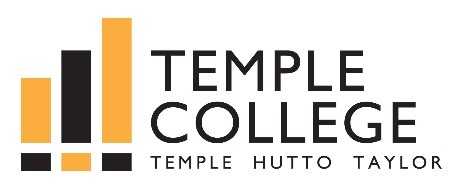
Temple College (TX)
Sharing Data With Academic Leadership
Temple College continually promotes active learning and high student engagement. As part of our Strategic Plan, our goal is to “increase student engagement through departmental initiatives inspired by CCSSE responses for Active and Collaborative Learning and Student/Faculty Interaction” with our target as “meet or exceed benchmarks for a medium college on the 2017 CCSSE administration for Active and Collaborative Learning and Student/Faculty Interaction.”
We know that CCSSE provides rich data to help us determine how well we’re doing in these areas, but we also know that academic leadership and faculty have to be engaged with the data in order to impact results. With this idea in mind, we facilitated an opportunity for academic leadership to critically review and discuss our results. Last fall, a Leadership Series was held for division directors and department chairs. This series was presented by Dr. Susan Guzmán-Treviño, Vice President of Academic Affairs, and Dr. Mark Smith, Vice President of Educational Services.
We began by providing an overview of the instrument. Next, we facilitated a group activity and asked our department chairs and directors to respond to CCSSE’s Faculty Prediction Exercise. In this activity, participants read the CCSSE item and then gave their best estimate on students responding “often or very often.” After participants responded to several items, we displayed the actual response percentages. Some were surprised that their estimates were much higher than students’ actual responses.
After discussing the Faculty Prediction Exercise responses, we provided data showing our overall 2017 results, and participants saw that we didn’t quite reach our Strategic Plan target of meeting or exceeding benchmarks for a medium college as shown below.
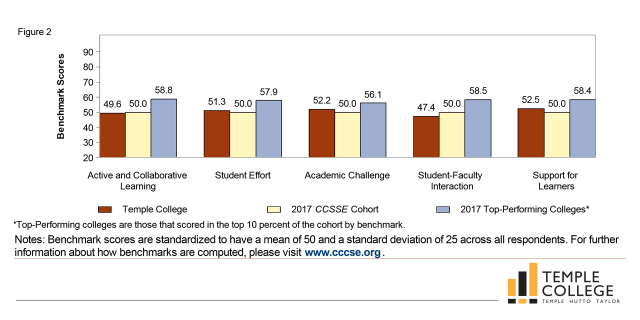
Next, we brainstormed improvement strategies. One suggestion was to have a more intense presentation to faculty at department meetings about the results so that faculty could all understand the significance of the instrument and also brainstorm ideas for improvement.
We examined some of the specific items to which students responded, and we had good discussion about the various ways students might interpret the questions being asked. A suggestion was made to standardize CCSSE wording. For example, one item focuses on “e-mailing with the instructor.” Because some faculty rely heavily on the paging system in our learning management system, Desire to Learn Brightspace, participants weren’t sure the students’ responses accurately reflected true faculty/student interaction levels. Their idea was to help students better understand the various ways that this interaction might be accomplished.
A list of CCSSE resources was provided to participants, and tools such as the Faculty Predictions Exercise, the Pathways Toolkit: Intersecting Engagement Data with Pathways, and the Faculty Focus Group Discussion Guide were loaded to our Employee Portal for easy access.
Community College Voices: On Teaching and Learning
In spring 2019, Center staff conducted interviews with faculty at the NISOD conference on the topic of innovation in teaching and learning. This work is part of the Ensure Students Are Learning Project. The project, funded by the Bill & Melinda Gates Foundation, is supporting the Center in developing common understanding of and resources for ensure students are learning (Pillar Four in the guided pathways model) in an effort to increase content for institutions so that they can more effectively implement guided pathways. Learn more about the project here.
Listen in for a preview of what faculty shared about their innovative approaches to teaching and learning. To see video clips featuring other aspects of the community college student experience, visit the Center’s YouTube Channel.
The Center will release a report on this topic in fall 2020.
|
Faculty member describes how he uses homework to measure students’ progress and to inspire them
|
|
Faculty member describes how she makes engagement inescapable in her classroom
|
Delving Into Data: What Questions to Ask of Your College’s Data
Center staff are often asked how to get the most out of the survey results. With the adage “If one person asks a question, others likely have the same unvoiced question” in mind, we want to take this opportunity to address this for a broader audience. Since every college is different, a prescriptive response would not be useful for the majority of colleges, so we will address this inquiry with a few questions that have helped institutional researchers get more from their data.
- What are your college’s priorities? This first question can help focus analysis of results to those items that directly address institutional priorities.
- Are you looking beyond benchmarks? Rarely will all items within a benchmark address institutional priorities; therefore, focusing only on benchmark scores could mask changes that are happening at the individual item level that directly address institutional priorities
- Are you disaggregating by demographics? Equity is a key focus of current work on student success. Disaggregation is necessary to understand if there are equity issues, and if so, where the gaps are closing.
- Are results being shared with faculty, advisors, student services, or others at the college? Survey items address student experiences in all of these areas, and the results could help identify areas that could directly impact student success.
- Have you linked survey data with other institutional data? Combining Center survey data with other institutional data can provide a much richer and deeper understanding of survey results. For example, how do item responses relate to student persistence? This question requires the use of the raw data file that includes student IDs. If you need this file, please contact surveyops@cccse.org.
We hope this collection of questions helps you think of ways to tease more information from your survey data. If you would like to discuss this in more depth, contact data@cccse.org. We are here to help you get the most out of your data!

Assistant Director of Research
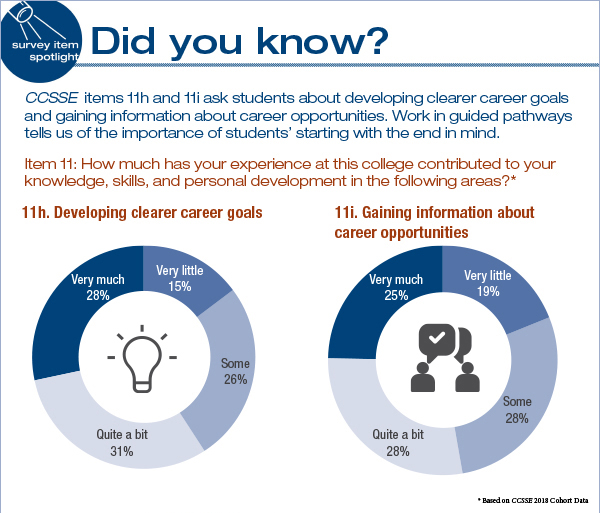
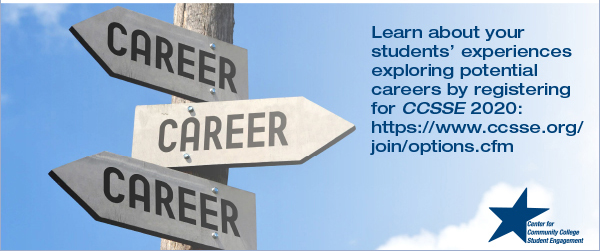
Featured Tool: Connecting Center Data to Academic Mindset
The Center’s core surveys (CCSSE, CCFSSE, and SENSE) provide a range of data that colleges can connect to mindset work. The Connecting Center Data to Academic Mindset tool includes items from the three surveys that colleges can use to support campus conversations about each of the four components of academic mindset. Because the four components are interconnected, some survey items could fall within component areas other than the ones in which they appear below—and efforts to influence one component may have an impact on another. The tool can be found here.
Read more about the Center’s work in the area of academic mindset here.
For more information, or for assistance with Center tools, contact surveyops@cccse.org

Survey Operations Coordinator
On the Road
Center staff have been busy this year visiting college campuses in Arizona, California, Colorado, Iowa, Kansas, Louisiana, Missouri, Oregon, Tennessee, Texas, Wisconsin, and Wyoming.
We can provide workshops tailored for single institutions, districts, systems, regions, or other organizations. Topics may include introducing institutional Center data, communicating Center survey results to internal and external groups, understanding and using these results for improvement, and so on.
Please direct inquiries to info@cccse.org.

